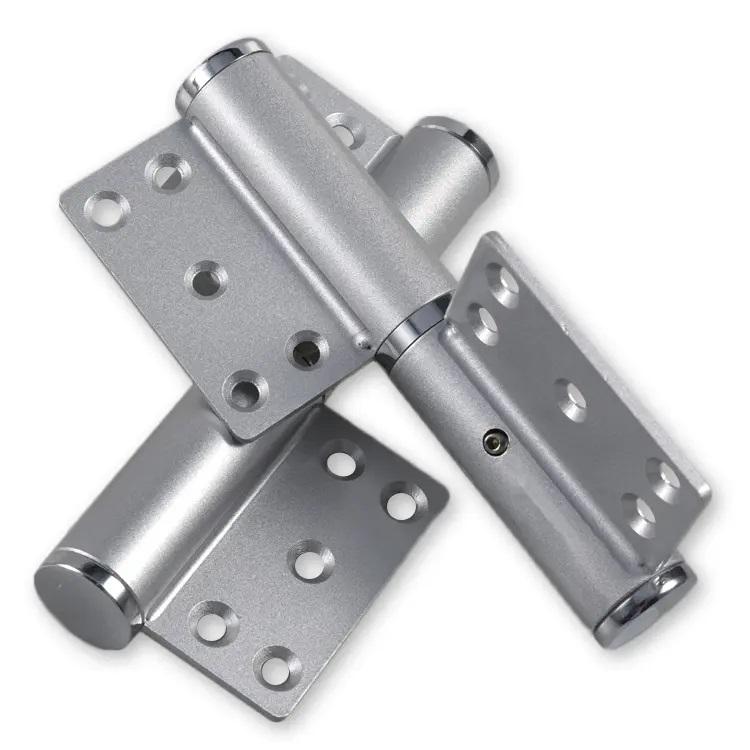
Self Closing Hinges
Self closing hinges are an innovative door hardware that allows doors to close more smoothly without the need for traditional hydraulic door closers. Self-closing hinges have a compact design that combines door closer, door stopper, positioner and shock absorber in one body.
Eliminates the levers of unsightly hydraulic closers that are not compatible with later systems such as wire gates. Its simple and beautiful design is compatible with different door styles.
Soft Closing Hinges
Additionally, they can offer a slow-close feature; however, not all self-closing hinges may have a slow closing feature.
They are generally of two types; spring hinges and hydraulic hinges. Spring hinges do not have a slow closing feature as well as self closing. Hydraulic hinges can have both features depending on their construction features. Or it can only be used with self-closing spring hinges with its slow closing feature. In this case, the door to which the application is made has a self-closing feature and a slow closing feature.
In systems where both spring hinges and hydraulic hinges are used in combination, the spring hinge closes the door and the hydraulic hinge acts as a buffer and performs the slow closing task.
Hydraulic hinges & spring hinges
The combination of spring hinge and hydraulic hinge allows even heavy doors to work with desired features. At the same time, it has a high advantage over other systems as it provides very easy adjustment.
Our spring hinge does not require any adjustment and our hydraulic hinge has only one adjustment for the slow & soft closing feature. Therefore, easy to install, even easier to set up.
Features:
- This product is used as a combination of hydraulic hinge and spring hinge, and according to the type of hinge, there are right and left hinges used during assembly.
- Automatic door closing speed can be adjusted. The closing effect is slow and gentle; quiet, in addition secure and jam-free.
- The maximum opening angle is 180° in one direction; If the angle is less than 80°, the door will close automatically and softly.
- Free door stop angle: 180°- 80°; fast closing angle: 80°- 30°; slow closing angle: 30°- 10°; latching angle: 10°-0°.
How do hydraulic hinges work?
Hydraulic Power: When the hinge is opened, the bending deformation of the torsion spring, produces a backlash & closing force. A small oil cylinder is placed on the hinge shaft, and this piston with oil return hole, slides back and forth along the wall of the oil cylinder to generate hydraulic pressure.
Damping: When the hinge is closed, the pressure created by the bending of the torsion spring forces hydraulic oil in the cylinder to flow through the small hole of the piston. The oil flow rate is low due to the small diameter of the oil hole. Therefore, the torsion spring is prevented from closing the door quickly, thereby damping or buffering the closing speed.
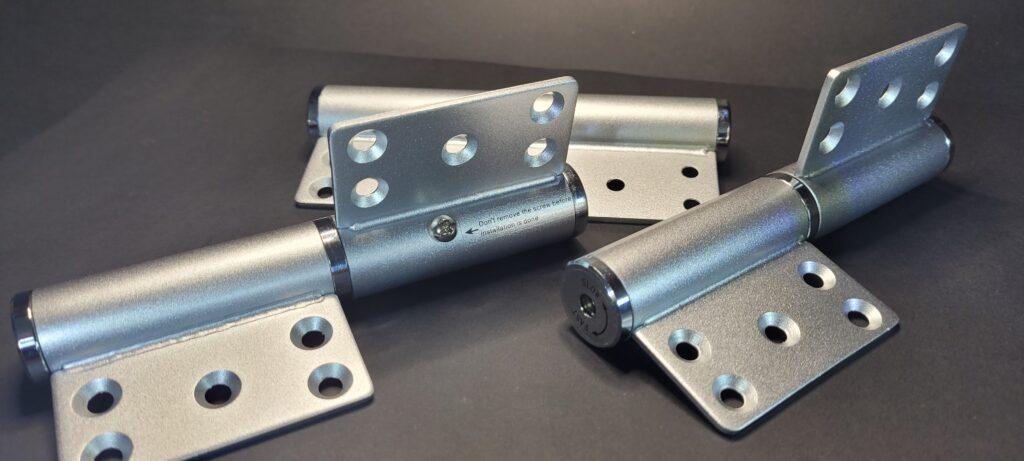
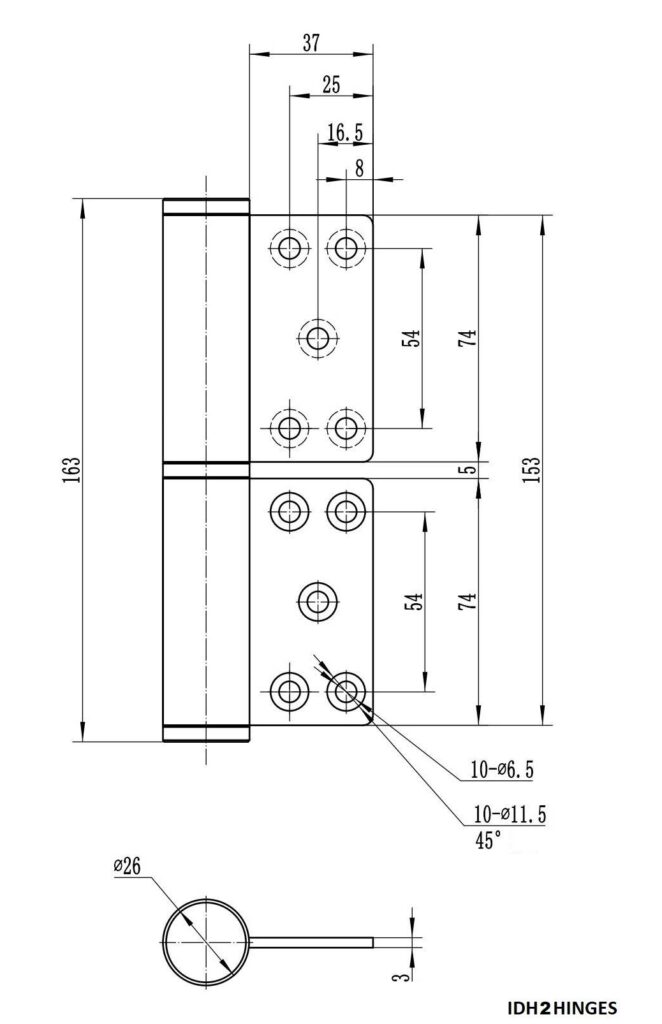 Code: M2
Code: M2
- Name: Self Closing Hinge
- Door weight: 40/60/80kgs
- Door width: 800~900mm
- Max door height: 2200mm
- Door thickness: 40~60mm
- Max. opening angle: 180°
- When “F type” is used, it should be defined as left opening or right opening.
- When “E type” is used, there is no difference between right opening or left opening. type”
- Colour: Black or Silver
- Lifespan:100,000 cycles
- TESTED FOR FIRE RATING
- Click here for M2 FLAG HINGE INSTRUCTION
| Model No. | Product | Applicable door specifications / types | Remark | |||
| Door Weight (kg) | Door Height (mm) | Door Tickness (mm) | Door Width (mm) | |||
| M2-40 | M2 Self closing hinge kit / 40kg / with latching force | ≤40 | ≤2000 | ≤800 | 1 x spring 1 x hydraulic | |
| M2-60 | M2 Self closing hinge kit / 60kg / with latching force | 40-60 | 1 x spring 1 x hydraulic 1 x empty | |||
| M2-80 | M2 Self closing hinge kit / 80kg / with latching force | 60~70 | ≤2200 | 40-60 | ≤900 | 2 x springs 1 x hydraulic |
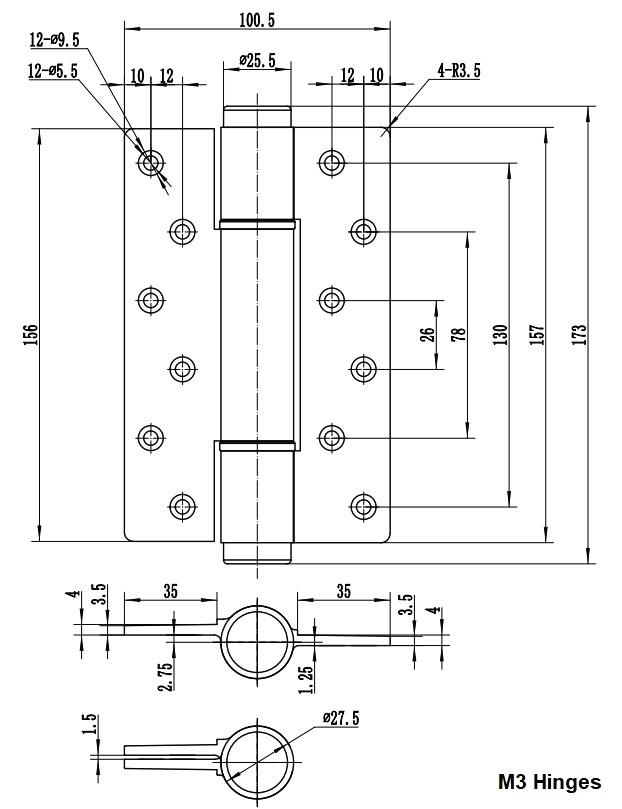
Code: H3
- Name: Self Closing Hinge .
- Door weight: 50/70/90kgs.
- Door width: 800~1200mm.
- Door thickness: 40~60mm.
- Max door height: 2400mm
- Opening angle: 180°.
- There is no difference in right or left opening, it can be used for both; only “E type” is available.
- Colour: Black or Silver.
- Lifespan: 200,000 cycles.
- Click here for M3 Hydraulic Hinge Instruction Manual
| Model No. | Product | Applicable door specifications / types | Remark | |||
| Door Weight(kg) | Door Height(mm) | Door Width (mm) | Door Thickness (mm) | |||
| M3-50B | M3 Hydraulic door hinge / 50kg / With latching force | ≤50 | ≤2000 | ≤800 | 40~60 | 1 x spring 1 x hydraulic |
| M3-70B | M3 Hydraulic door hinge / 70kg / With latching force | 60~70 | ≤2200 | ≤900 | 1 x spring 1 x hydraulic 1 x empty | |
| M3-90B | M3 Hydraulic door hinge / 90kg / With latching force | 70~90 | ≤2400 | ≤1200 | 2 x spring | |
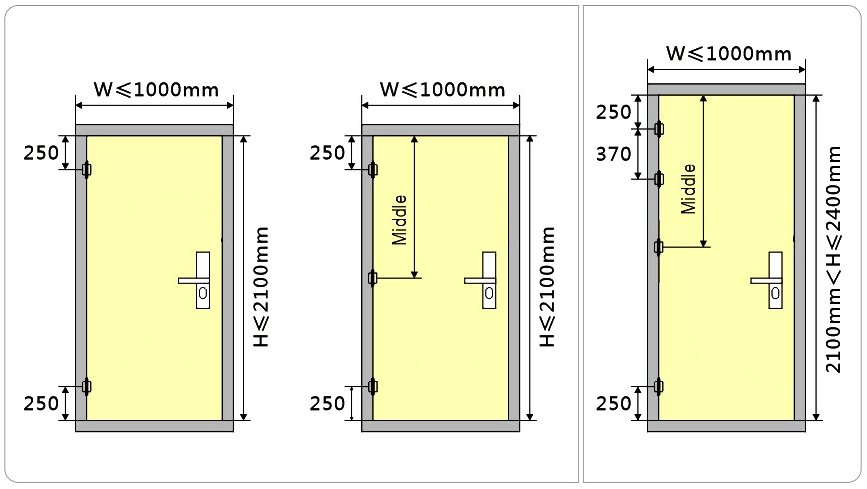 How Many Hinges Do I Need?
How Many Hinges Do I Need?
This depends on the style of hinges and most doors have three hinges based on their size. However, you should measure your door to determine how many hinges you need. For every 30” (762 mm) of the door height, you need one hinge. Most doors are around 90”, which is why they contain three hinges.
Particularly large doors with a width between 37” (940 mm) to 48” (122mm) may benefit from an additional hinge for extra strength. The additional hinge supports the weight of the larger door which helps keep the door and frame in better condition.
How to Determine Door Handing
To choose the right hinge style and location, you must determine the correct door handling. Door handing is the direction your door opens. Swinging doors can be outswing, inswing, left-hand reverse, etc.
Determine the door handling for entry and exterior doors from the exterior of your property. For interior doors, stand outside of the room looking at the door.
Here’s a breakdown of the types of handling:
- Hinges on the left = left handling
- Hinges on the right = right handling
- Door swings into the room = inswing
- Door swings toward you = outswing
